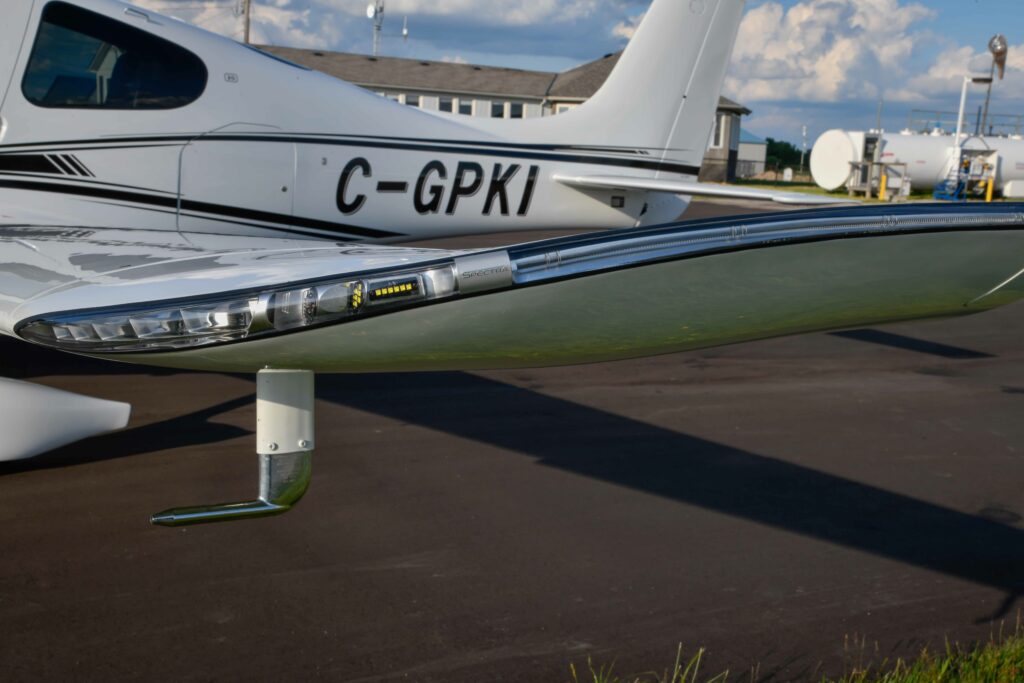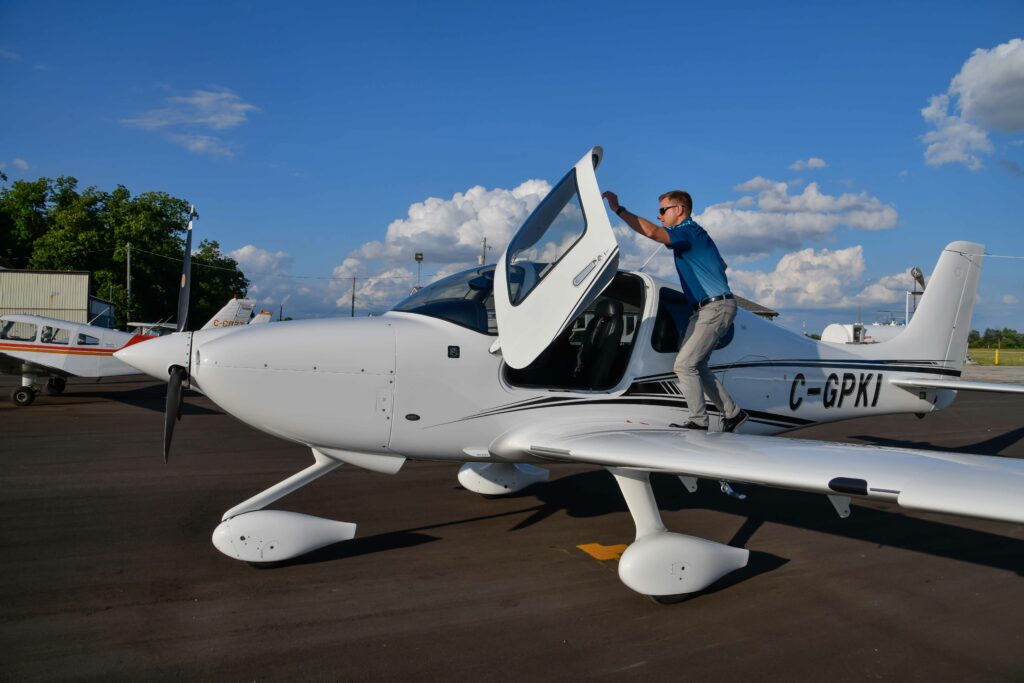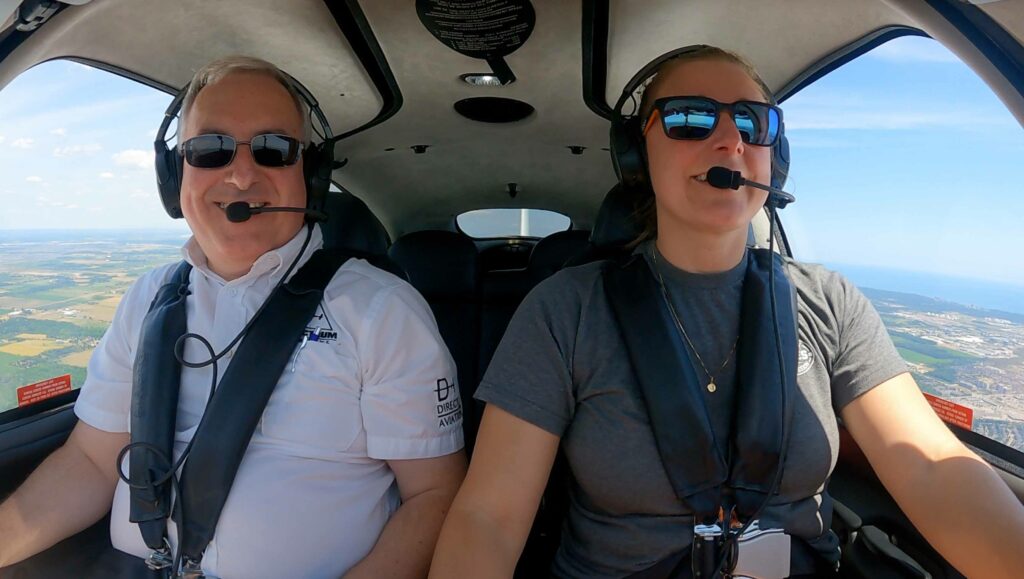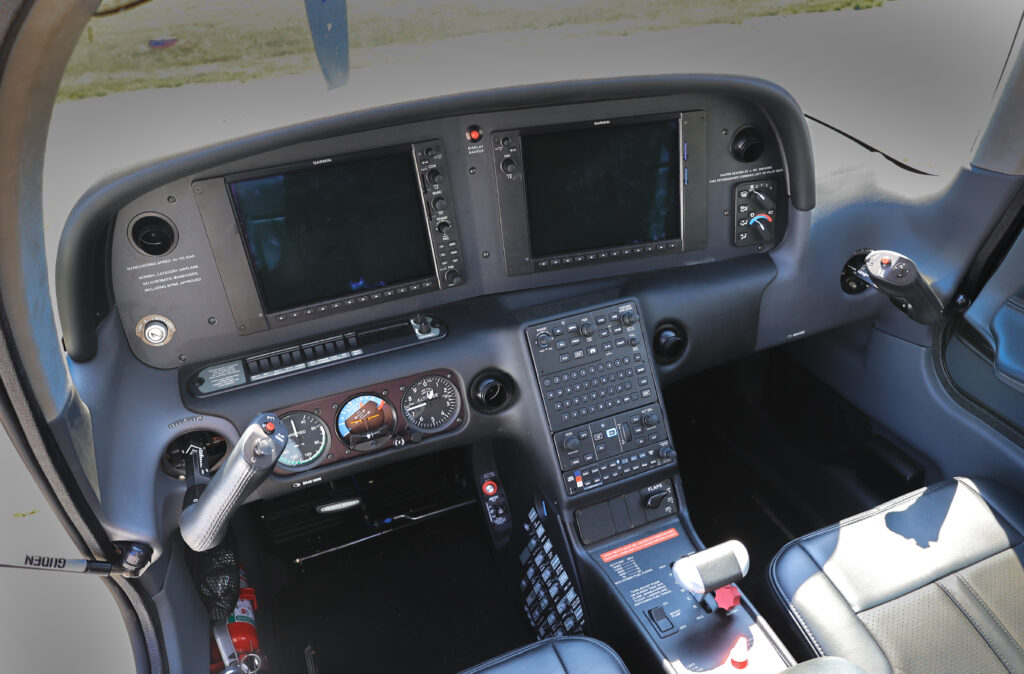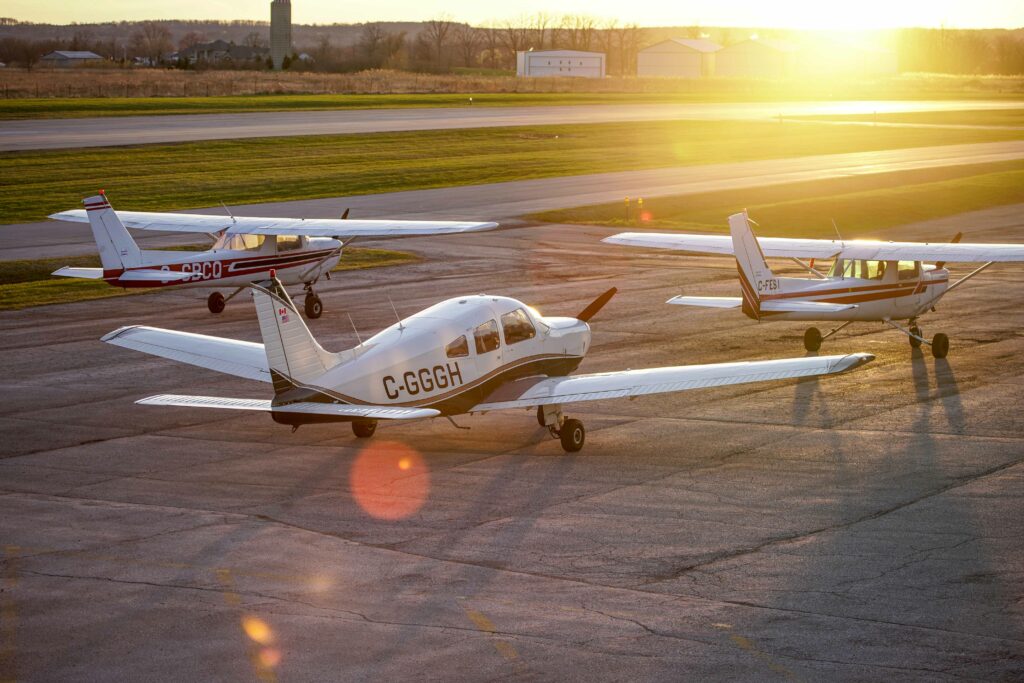Estimated reading time 13 minutes, 9 seconds.
Life is composed of a series of decisions. Some are as simple as what coffee you’re ordering from Starbucks this morning, while others are pivotal and life changing. Choosing to become a pilot is the latter. Nothing is as exciting, or exhilarating, as making a commitment to your dreams and proudly announcing to your family and friends, “I’m going to become a pilot.” Once you’ve taken the leap of faith into the world of aviation, what’s next? The journey can be complicated, and it’s important to have someone to guide you through.
Burlington, Ontario-based flight training and career college, Spectrum Airways, has been guiding flight students for nearly 40 years. It has deep roots in Canadian aviation and has been run by the Kovachik family since its inception in 1982. Current owner and operator Chris Kovachik took over Spectrum from his father, and has spent his entire life immersed in the business.
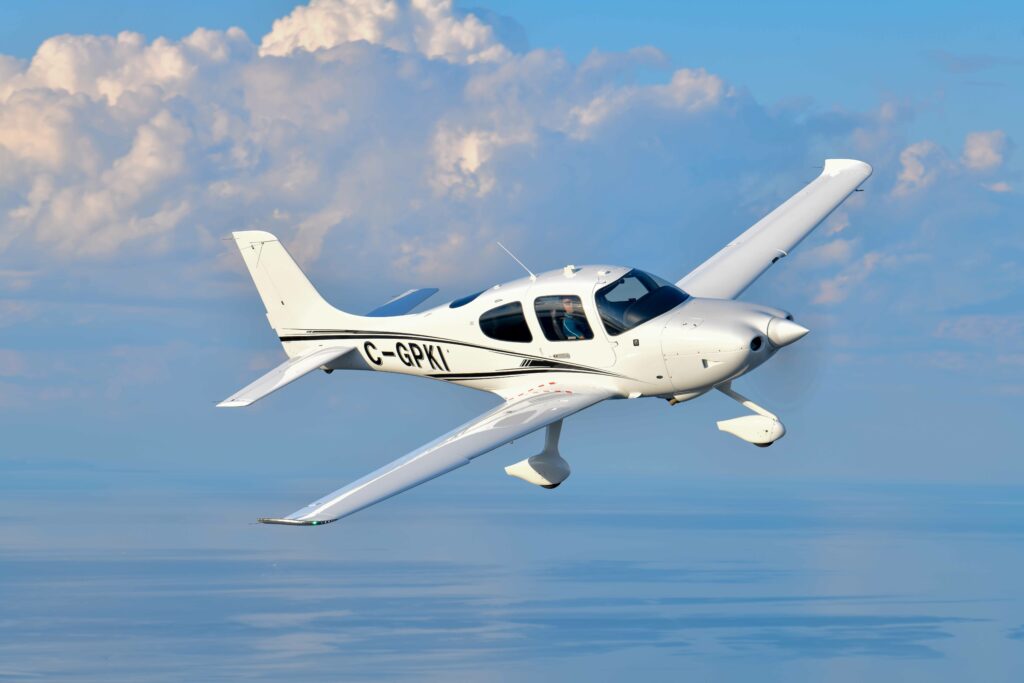
What started for the Kovachiks as a passion for maintenance and operations naturally evolved into growth as a flight training unit. The operation of the flight school is supported by Spectrum’s sister company, Kovachik Aircraft Services, which provides maintenance for the flight school’s entire fleet of 13 aircraft — comprised of four Piper Warriors, a Piper Seneca, and Cessna 152s and 172s. A combination of Dynon glass cockpits, Aspen panels, and Avidyne 440s bridge the gap between older-era aircraft and the modern age.
To ensure the students get experience on more advanced technology, “we’ve stuck to our older fleet and replenished them, getting heavy into avionics,” said Kovachik.
But something exciting has been brewing among the hillsides of the Niagara Escarpment. Spectrum Airways has partnered with Cirrus Aircraft to offer a Cirrus Flight Training Program. It is the second flight school in Canada, and the first in Eastern Canada, to do so. Spectrum has added the advanced, single-piston-engine Cirrus SR20 to its fleet, offering students, pilots looking to expand on their training, and prospective aircraft buyers the opportunity to experience the aircraft’s handling, maneuverability, and avionics capabilities.

It also means students at Spectrum, and customers, will have some of the most advanced technology in the industry at their disposal. The SR20 will allow students to build a foundation and familiarity with systems likely to be seen on an airliner or corporate jet. This is especially exciting for pilots who have their hearts set on the airline industry, as they will have ample opportunity to learn on systems that they can anticipate using in their future career.
The Cirrus Flight Training Program
As the industry evolves, more and more often we are seeing pilots move from flight training centers straight into regional carriers. Spectrum believes the SR20 is the perfect ship to bridge that gap, giving pilots exposure to managing a flight deck.
There is a lot of clout that comes with offering a Cirrus Flight Training Program. Spectrum Airways’ Cirrus Standardized Instructor Pilot, Hal Slominski, had this to say about the flight training program:
“The type of training we put our students through is very similar to what an airline would put their pilots through for a type rating or a corporate aircraft. [Cirrus has] mirrored their training program and philosophy based on that. The quality of the training material provided by Cirrus would rival what I’ve seen in the airlines.”

Spectrum said its flight students and Cirrus customers are automatically registered in the Cirrus Program, which gives them access to all of Cirrus’s online programs.
Currently, Spectrum is offering Cirrus flight training to licensed private and commercial pilots, and is also offering Cirrus transition training and advanced transition training for instrument flight rules (IFR) rated pilots.
Cirrus Embark transition training is a large part of the training center, too. Embark training is three days of complementary transition flight training offered by Cirrus to any new owner of a pre-owned Cirrus aircraft, delivered by one of Spectrum’s Cirrus instructors.
While Spectrum only started its Cirrus Flight Training Program six months ago, with one 2021 Cirrus SR20, the team has plans to expand the fleet and instructors over the coming years.
Test Flying the SR20
In early July, I met Spectrum Airways flight instructor Brian Huston for a demo flight in their SR20. It was a perfect, blue-bird day along Lake Ontario with minimal haze. But man, it was hot.
I had never flown a Cirrus aircraft before. Its sleek, technologically advanced design drew me in, but as a general aviation pilot who flies mostly steam gauge panels, I had always thought the SR20 was out of my league. That was until Spectrum Airways launched into this new endeavor with Cirrus, which made me think the idea of flying the SR20 wasn’t so far-fetched after all.
We completed our walk-around and jumped in the aircraft. I turned the key on the starter and the engine roared to life. Cold air began pumping through the vents and my skin slowly started to cool against the black leather seats. Before we got moving, the Cirrus Perspective+ intuitive flight deck by Garmin prompted us through all of our pre-flight checks. It was more thorough than I’ve ever seen in any aircraft I’ve flown.
We lined up on runway 14 at Burlington Executive Airpark and began our takeoff roll. I was surprised by how quickly we accelerated with the aircraft’s 215-horsepower Lycoming IO-390-C3B6 engine. The throttle prop lever took another thing off my plate; it seamlessly integrates the constant speed propeller with the throttle. The positioning of the controls was easier to adjust to than I had anticipated. However, they were much heavier and required more frequent trimming and force than in a traditional aircraft.
The SR20’s long, carbon-fiber wings provide a maximum glide ratio of 9:1 and an average cruise speed of 145 knots at 75 percent power. In other words, the SR20 gets ya places.
The aircraft responded quickly to my inputs, but it’s really not designed for the pilot who wants to hand-fly. It’s designed to reduce pilot workload. Managing the systems and the autopilot are key to flying this airplane — to the point where you can’t even go into a steep turn without the system trying to pull you out of it.

A popular topic of discussion during the demo was the Cirrus Airframe Parachute System (CAPS), where a small solid-fuel rocket is used to pull the parachute out from its housing in the aft fuselage and deploy the canopy fully within seconds. But my instructor, Huston, assured me that was just the beginning of the aircraft’s safety technologies.
He continued, “The landing gear is designed to collapse on impact, taking a sufficient amount of energy away from the occupants. In addition, the seats inside the aircraft are designed to do the same. There is a honeycomb structure underneath the seat which gives a nice ridged support, but upon impact collapses and takes energy away from the occupants. The four-point harness system with the included airbags will complete the job of holding the occupants in place and keeping their heads safe.”
It would seem someone at Cirrus was wearing their safety cap when designing the aircraft.
When we landed, I couldn’t help but feel that everything was a lot more intuitive than I anticipated. Flying the aircraft felt really good, and although autopilot management was new to me, and the feel of the controls was heavier than I was used to, the aircraft gave me a sense of safety — which is invaluable.
“What Klapmeier set out to do is design a modern aircraft with as many safety features as he could design to keep pilots safe,” said Huston. “It would be very difficult to argue that he hadn’t succeeded.”
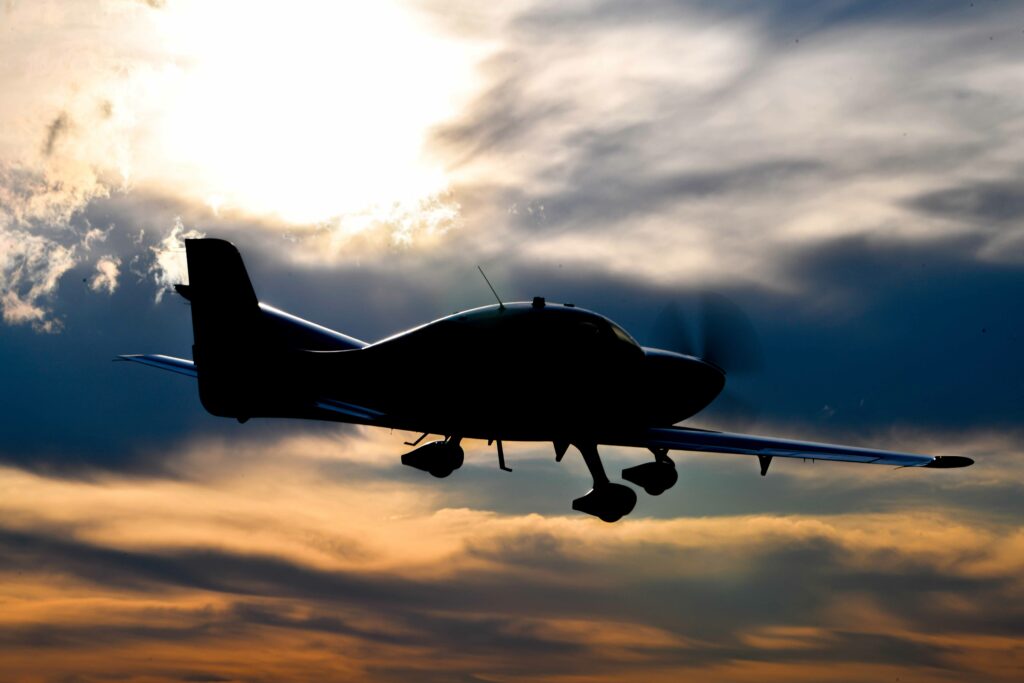
Having an offering like the SR20 not only benefits Spectrum Airways, but also the surrounding aviation community.
You Don’t Know Until You Try
During the pandemic, there was a big shift in the flight training industry. The customer base went from graduate students considering a career change, to a demographic that has disposable income and has always wanted to learn to fly. The shift from career pilots to hobby pilots has been really exciting, and although the industry is starting to notice a shift back to more career-driven students, Spectrum Airways is looking forward to giving the community access to its advanced SR20 aircraft.
“We are happy to continue to grow and offer specialty services, like our partnership with Cirrus Aircraft, to our customers,” concluded Spectrum’s Kovachik.
We are looking forward to seeing what impact this new offering will have within the flight training environment in Canada, and wish Spectrum Airways and its customers all the best in their flight training.


